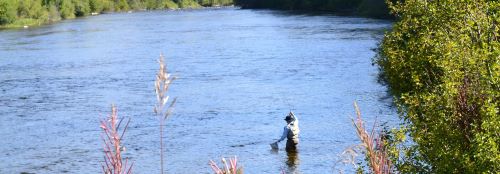When matching the hatch, most anglers focus on larger stoneflies, mayflies, and caddisflies, but the majority of insects that trout eat in rivers are small. Since trout regularly eat the following three little bugs,
- blue winged olives (mayfly)
- yellow Sallies (stonefly)
- Grannom sedges (caddisfly),
look for patterns, tied on size 14 hooks or smaller, that imitate them.
Blue Winged Olives (Mayfly)
Blue winged olives (BWO) are a group of several mayflies species belonging to the Baetidae family. These small mayflies start to hatch as early as May and continue until the middle of July. There is also a second hatch that takes place from September to October. During a hatch, a BWO nymph swims to the surface where the dun emerges. Since duns float long distances to allow enough time for their wings to inflate, they are very vulnerable to trout, and provide good opportunities for anglers to match the hatch.
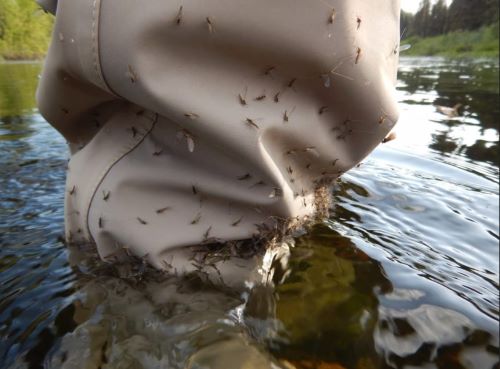
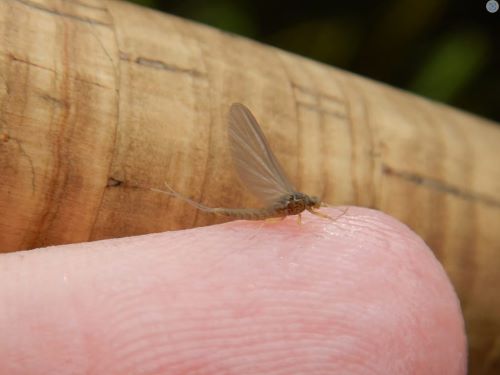
BWO nymphs are excellent swimmers and inhabit many types of water, but they are most abundant in moderately flowing runs. To imitate the nymphs, use size 16 to 18 Beadhead Pheasant Tail or Perdigon nymphs in olive. Duns and spinners are best imitated using size 18 dry flies tied with olive bodies and dark grey hackles.
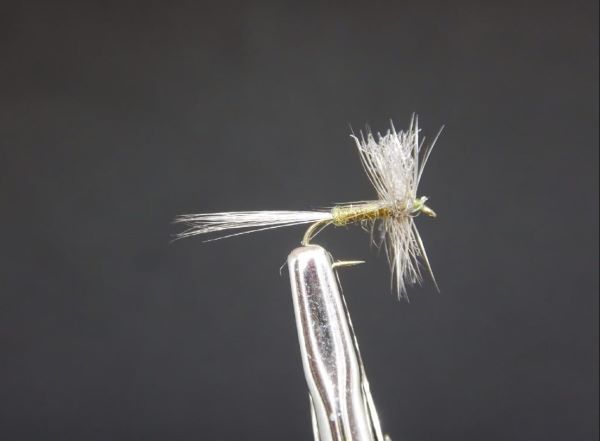
Yellow Sallies (Stonefly)
Yellow Sallies are stoneflies belonging to the genus Isoperla in the Perlodidae family. These relatively small stoneflies hatch from June to July, and you can find hundreds of them along rivers with heavy vegetation close to the shoreline.
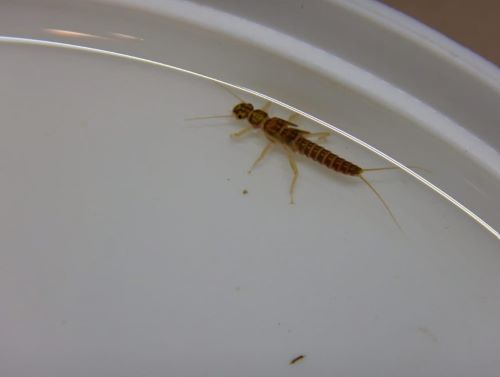
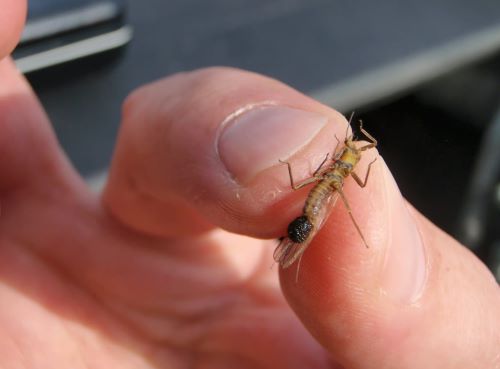
When imitating yellow Sallies, fish both nymph and adult patterns. Use size 14 nymphs in the weeks leading up to the hatch, and Yellow Sally dry flies when you see them flying. Trout feed mostly on adults when females return to the river to lay their eggs, especially in the afternoon.
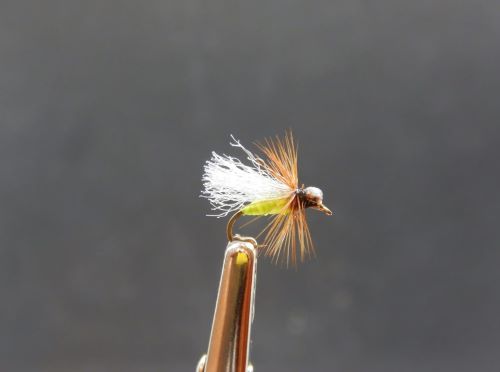
The majority of commercially available fly patterns imitating adult yellow Sallies are bright yellow with a bright red butt. However, only a few species like the Isoperla mormona (also known as the Mormon Girl Yellow Sally) have red butts, whereas most naturals are tan to yellow-brown, and appear light yellow when flying. To cover all bases, make sure you have tied up some yellow Sally imitations with and without red butts.
Grannom Sedges (Caddisfly)
This caddisfly is also prevalent in many B.C. streams, especially in the Interior. This caddisfly is also known as the Mother’s Day Caddis in some parts of the United States due to intense hatches around that weekend. There are two species of Grannom sedges that hatch at different times during the season. The first, Brachycentrus occidentalis, hatches from May to June, and the second, B. americanus, hatches from August to September. In colder streams, Grannom sedge hatches are often delayed by a couple of weeks while the bugs accumulate enough heat to hatch.
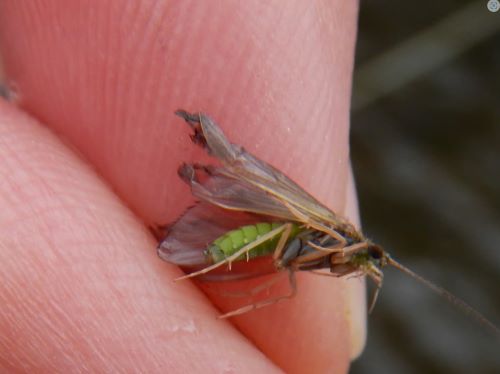
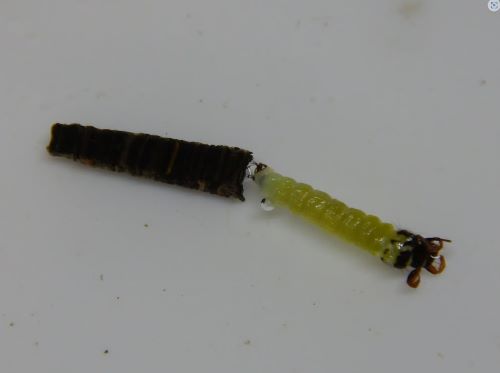
The Grannom caddisfly larva builds what is known as a chimney case that has four symmetrical sides that taper towards the back. Anglers have success imitating these larvae in their cases with flies tied on size 14 and 16 hooks. During a hatch, you can imitate the pupa rising to the surface using a size 16 soft hackled fly with an olive- to bright-green body and grey hackle. Imitate an adult with size 16 dry flies that have bright green bodies and grey wings.
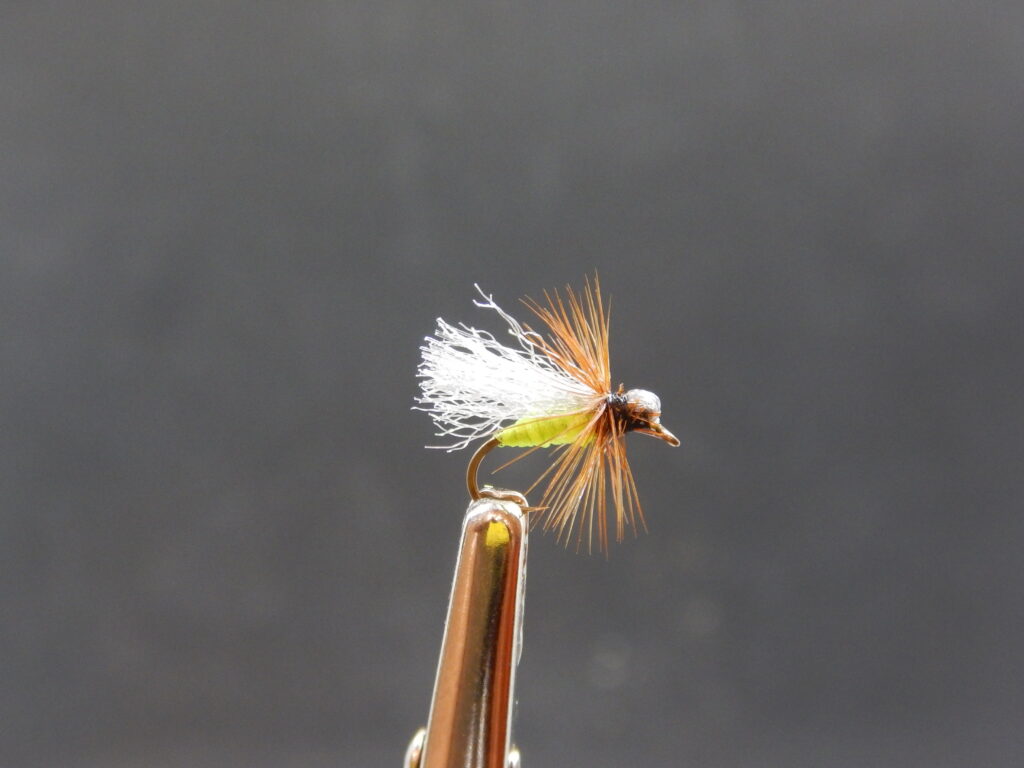
BWOs, yellow Sallies and Grannom sedges are staples for trout in streams, especially those in the B.C. Interior. Although they are small, big bad trout feast on them regularly. The challenge for the angler is to land fish on smaller hooks using thinner diameter tippets. On streams receiving more angling pressure, imitating these little bugs can make all the difference.
Author: Danie Erasmus
Images: Danie Erasmus
Danie Erasmus lives in Prince George. In his spare time, he writes articles about fishing on streams, and operates a website: www.princegeorgeflyfisher.com dedicated to educating anglers about fly fishing. Danie also teaches a number of fly-fishing courses that range from beginner to more advanced levels. Follow Danie on Facebook and Instagram.
